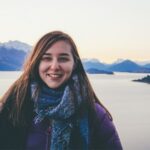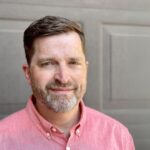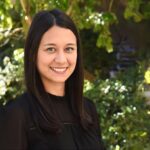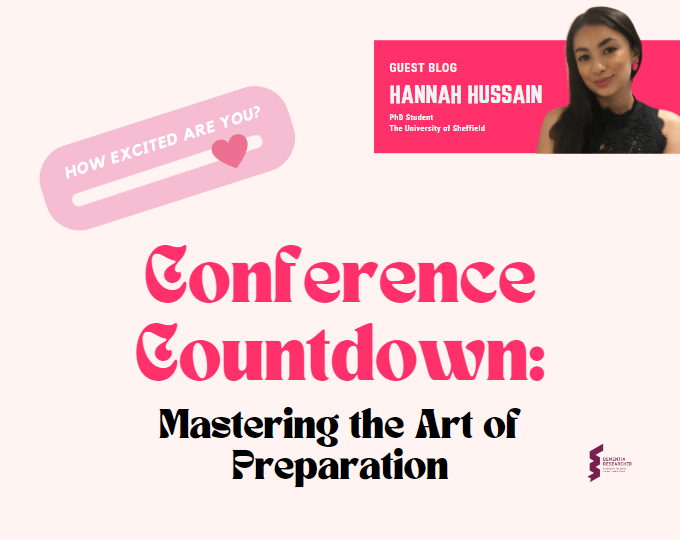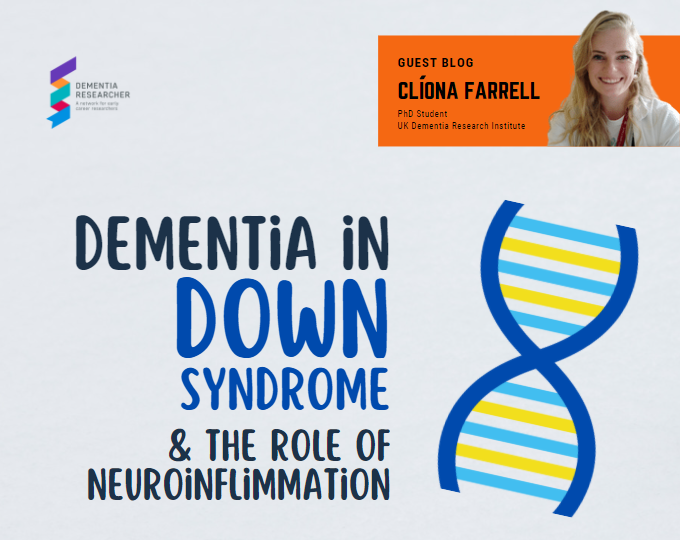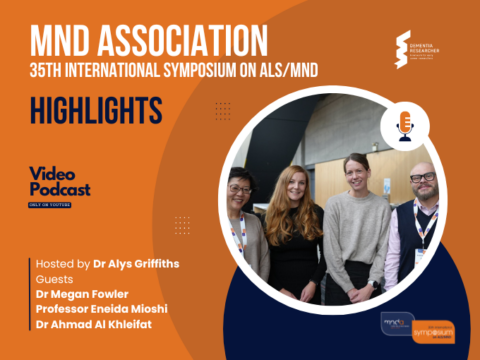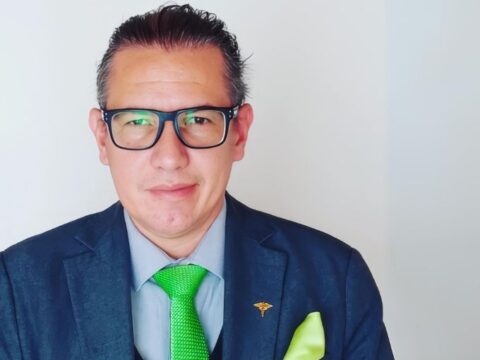This week the Dementia Researcher Podcast shines a spotlight on last months DSAD-ADAD Conference, which focused on Down Syndrome Associated Alzheimer's disease (DSAD) and Autosomal Dominant Alzheimer's Disease (ADAD). The conference, held in Barcelona, brought together over 160 researchers from 16 countries to discuss groundbreaking research in the fight against Alzheimer's disease.
The podcast hosted Sára Erzsebet Zsadányi features three guests, Natalie Edwards, Dr Lisi Flores Aguilar, and Professor Jason Hassenstab. Together they share news from the conference and discuss various topics from genetic predispositions to treatment strategies. The conference highlighted the importance of collaboration and the overlap between DSAD and ADAD research. The podcast also touches on the potential of using retinal imaging as a biomarker for Alzheimer's disease, the importance of considering sex and APOE4 homozygotes in research, and the need for more patient perspectives in clinical trials.
Voice Over:
The Dementia Researcher Podcast, talking careers, research, conference highlights, and so much more.
Sára Erzsebet Zsadányi:
Welcome to the Dementia Researcher Podcast. Today we're bridging the fields of Down syndrome and autosomal dominant Alzheimer's disease and unpacking the insights and breakthroughs from the recent DSAD-ADAD Conference.
Hello and thank you to all of you tuning in today. I'm Sára Zsadányi and I'm delighted to be guest-hosting this special show. We all gathered in sunny Barcelona to hear about some fascinating research in Down Syndrome Associated Alzheimer's disease, or DSAD, and Autosomal Dominant Alzheimer's Disease, known as ADAD. All this at the conveniently named DSAD-ADAD Conference. With the support of the Alzheimer's Association, this conference was brought to life by Dr Juan Fortea, head of the Memory Unit at Hospital Sant Pau, and Dr Raquel Sánchez Valle, head of the AD and other cognitive disorders group at Hospital Clinic Barcelona.
So, picture this, the vibrant City of Barcelona, great food, great weather, and more than 160 researchers from 16 countries gathered to talk about groundbreaking research in the fight against Alzheimer's disease. There are a lot of firsts here. So, in the world of Down syndrome, it was the first to specifically focus on Alzheimer's disease, and the same is true for ADAD research. And of course, this was also the first conference dedicated to bringing these two worlds together and discussing the overlap and the importance of collaboration.
So, in today's amazing episode, I'm joined by three incredible guests, each a superstar in their own right. So, we're going to get into everything from the nitty-gritty of genetic predispositions to the latest in treatment strategies and how all of these revelations are directing us down new research avenues. Our guests have seen it all and they're here to tell us about the most interesting moments from the conference and to share their best bits. But now I'm going to shut up and I'll let them introduce themselves. It's my pleasure to introduce Natalie Edwards, Dr Lisi Flores, and Dr Jason Hassenstab. So hi, everyone.
Dr Lisi Flores Aguilar:
Hello.
Natalie Edwards:
Hi.
Professor Jason Hassenstab:
Hello.
Sára Erzsebet Zsadányi:
So why don't you all introduce yourselves properly. So first off, we're joined today by Natalie Edwards from Columbia University.
Natalie Edwards:
Thank you for having me. My name is Natalie, and I am a second year PhD student at Columbia University. I work with Dr Adam Brickman in the Alzheimer's Biomarker Consortium Down Syndrome, or ABC-DS, as I'm sure we'll mention it a few more times. And my research is really focused on examining the contribution of cerebral vascular disease to Alzheimer's disease and Down syndrome. And I'm really looking at the interactive aspect between vascular disease and neuroinflammatory processes and how they contribute to disease progression.
Sára Erzsebet Zsadányi:
Amazing. And so, you flew in all the way from New York, all the way to Barcelona. I'm sure that you had a great time over here. Any highlights in terms of the city or food or anything?
Natalie Edwards:
So much amazing food and the weather was so much better than it had been in New York for a very long time. I think the best food I ate was probably the last night I was there, and we had some amazing croquettes that were actually voted the top in Barcelona, and I feel like they really held up to their name.
Sára Erzsebet Zsadányi:
Great. It's always good to hear about the food highlights, of course.
Natalie Edwards:
Very good.
Sára Erzsebet Zsadányi:
And next up, we're also joined by Dr Lisi Flores from University of California Irvine.
Dr Lisi Flores Aguilar:
Hi, Sára. So, thank you for inviting me. I am a postdoc, it's my second year. I am working with Dr Elizabeth Head at the University of California Irvine. And I am looking, well, I want to know if the blood-brain barrier is broken in people with Down syndrome and Alzheimer's disease. So here in the lab we work with post-mortem brain tissue. I love going to the microscope and staining these brains, and seeing these brains, and that's what I basically do on my day to day.
Sára Erzsebet Zsadányi:
That's amazing. It seems like another world to me, all of the brain staining and so it's really great. I saw your presentation was the first at the conference and mind-boggling to see all the things that you can do with post-mortem tissue, really.
Dr Lisi Flores Aguilar:
Yeah.
Sára Erzsebet Zsadányi:
Great. And then next up we've got Dr Jason Hassenstab from Washington University in St. Louis.
Professor Jason Hassenstab:
Hello, I am Dr Jason Hassenstab from Washington University in St. Louis, and I guess I'm the old guy in the room. I'm a professor in both the neurology and psychological and brain sciences departments and I've been a researcher in autosomal dominant AD for 12 years, I think. But also, just recently I started my own cohort of DSAD as well. So, we have an international study we're just starting that has five European sites, a site in South America, in Argentina, and we're hoping to add some more sites in Africa very soon. So, we're very excited about it. So, I kind of bridged DSAD-ADAD work.
I'm trained as a psychologist, so most of my stuff is about building technology for different research studies. We build smartphone apps and websites to assess cognition in the everyday lives and everyday environments of our participants. So doing this for Down syndrome has been one of the biggest challenges of my career, but this conference was just amazing for meeting people and learning so much. Just every day I was just riveted by every presentation. Sometimes I go to conferences, and I reach saturation very quickly. I don't know if that happens to anyone else who's ever been to a conference, but it does happen to me. And I have to say at this one, I didn't really hit that point, which was really refreshing.
Sára Erzsebet Zsadányi:
Great. It's really nice to have you on, especially because you do come from the other site, so we do have a lot of Down syndrome researchers here on our podcast. But yeah, it's nice to have you on. And I think that I know your highlight from this conference, Jason.
Professor Jason Hassenstab:
You do?
Sára Erzsebet Zsadányi:
Because the number one way to start any productive collaboration or any communication between different labs of course is with food. And I was told by a few people that you absolutely loved the Jamón Iberico, the ham that's so famous here in Spain.
Professor Jason Hassenstab:
I have to say it was fantastic and I just couldn't believe that this was just laying around and everyone can just eat it, and I would get in trouble I think if I lived in Spain with the Jamón, but also everything else, I love the wines and of course Manchego. How could you not love Manchego cheese? It's amazing.
Sára Erzsebet Zsadányi:
There you go. Perfect collaboration. You can come here, do your research over here with us, and eat Manchego, eat Jamón Iberico all day. So hopefully I can squeeze a few other highlights out of you. But now that you've all introduced yourself, I guess it's fair if I do the same. So, hi again, I'm Sára. I'm a second-year PhD student at Sant Pau Memory Unit and the Universität Autónoma de Barcelona. And at my day job I'm actually researching something quite similar to Natalie. So, I'm looking also at cerebrovascular lesions visible with neuroimaging and people with Down syndrome. But in the last few months I've also been pivoting towards studying both Down syndrome and ADAD. So, this was a really interesting conference to dip my toe into this crossover and see what's out there, see all the research that's being done.
So now with that rather long introduction out of the way, we can get onto the highlights. Let's start by talking about the first day. We had a really great range of topics including sessions on pathophysiology, on neuropsychology, and biomarkers. And also, another great thing was that we had a bunch of flash talk sessions. So, this was mostly made up of lots of really great presentations, a lot of them from early career researchers. So, Natalie, I'd love to ask you first, which talks do you find the most interesting on this first day? And maybe even one of them might've been your own talk. Who knows?
Natalie Edwards:
I will be partial. The flash talks were a really wonderful opportunity. I think sometimes with posters, again, that I feel like it can contribute to the oversaturation feeling where there's so much wonderful work to explore. So, it was wonderful to get to hear from a lot of the early career investigators in the flash talk session. But let's see, for the first day I will say I'm always going to be partial to biomarkers and neuroimaging talks. So, I really enjoyed the biomarker session.
I think I remember there were two, and I believe in the second one there was a talk given by Dr Laia Montoliu-Gaya from University of Gothenburg, and she looked at proteomics work in both ADAD and Down syndrome. And I think thinking about my own work, I found it really interesting to look at the profiles that she obtained, and she found that in both of these phenotypes that there seemed to be this early contribution of vascular and inflammatory factors, which is something that I have been able to see in my own work. So, I thought that that was really interesting, and I think it was something that as we got into the second day, so I won't go too far ahead yet, but I think the first day was there was a lot of work highlighting the similarities between the two.
And then the second day we got into some of the differences, which I thought were really fascinating as well. But I'll always be partial to the biomarkers and of course we see stocks to kick it off was fantastic as always.
Sára Erzsebet Zsadányi:
Thank you. When I arrived, I was absolutely shocked at how packed the hall was. I thought that's got to be just absolutely nerve wracking. It was impressive and I think Lisi kicked it off really well with your first talk as well.
Dr Lisi Flores Aguilar:
Thank you.
Sára Erzsebet Zsadányi:
So, on that topic, Lisi, do you have any particular highlights? Anything you really liked?
Dr Lisi Flores Aguilar:
I really liked a lot of things, and it was a really good meeting because I'm not familiar with some fields. I know neuroimaging, but I'm not an expert on neuroimaging. And the way things were presented were very easy to follow. So, I really enjoyed going to these sessions where I know that I don't have a very strong background, but I wasn't feeling like that.
But still, I am biassed to vascular pathology. So, one of my favourite talks was from Lajos Csincsik, I hope I'm pronouncing well his name. So, he's studying DI as a biomarker in people with Down syndrome and he was looking at vascular changes occurring in the eyes of people with Down syndrome. So, he measured the calibre of arterioles and venules and he found that it was wider in people with Down syndrome than neurotypical controls. He also found that people with Down syndrome have a thicker retina and he hypothesised that this may be related to neuroinflammation, which is also a topic that I'm very fond of because I did my PhD on neuroinflammation in people with Down syndrome.
So, he mentioned that there were no associations between cognitive scores and these vascular changes, but he's looking into correlating his findings with Alzheimer's disease biomarkers. So very interesting talk.
Sára Erzsebet Zsadányi:
And I think there's quite a lot of opportunity for collaboration also with people using the eye as a biomarker. And yeah, Lajos, that was a wonderful talk. I don't really understand how all of it works, but the way that he explained everything, it was just wonderful. And so, do you have any ideas about how you might be able to use the eye as a biomarker? This question for anybody, have you had any collaborations with anybody looking at the eye?
Professor Jason Hassenstab:
We've definitely had many people very interested in retinal imaging, mostly as a way to look at amyloid directly in our participants in the Dominantly Inherited Alzheimer Network, or the DIAN study, which you'll hear me just throw out a lot, sorry, the DIAN study. And we also, in our older adult clinic here, I've been very interested in retinal imaging for a long time, and everybody likes it because it's non-invasive. You can just come into the office and sit down in a chair. You don't have to inject any radioactive tracers into your blood. The equipment is relatively inexpensive, so it has a tremendous potential and could even be portable. You could even take it with you and go out into the field. So, there's all sorts of reasons to really, really like it as an option for a biomarker, which I think is really, really valuable.
Sára Erzsebet Zsadányi:
Of course, you can't take an MRI machine out into the field so easily.
Professor Jason Hassenstab:
Oh, they're working on that though.
Natalie Edwards:
Yeah, they're trying.
Sára Erzsebet Zsadányi:
I've heard.
Professor Jason Hassenstab:
Yeah, we have a couple, Tammie Benzinger from WashU has a couple in her office right now.
Sára Erzsebet Zsadányi:
Wow, amazing.
Professor Jason Hassenstab:
They're like, well, you can't see my hands but they're the size of a desk basically. And you can get people to lay down on them. And I don't know about the resolution, but it's pretty good.
Natalie Edwards:
Yeah, the portable MRI scanner is in low field, and I think they're controlled with a joystick. And the magnet strength is about 40 or 400. I always mess this up, kitchen magnets, but they're really cool. Adam Brickman is currently working on looking at that with a group in South Africa, which is cool.
Sára Erzsebet Zsadányi:
And I think that's another thing that, maybe I'm getting ahead of myself, was a bit more of the focus in day two, but in the case especially of people with intellectual disabilities, so the Down syndrome population, you have to think quite a bit about imaging techniques and how you can make it maybe easier, more feasible sometimes. So yeah, this retinal imaging idea, obviously it's a less claustrophobic sort of technique to be using with people who might have more issues with going into a machine. So very interesting. Something to keep an eye out, well, terrible pun, but to keep an eye out for in the next few years, I think. Next up, Jason, do you have anything that you really enjoyed on day one?
Professor Jason Hassenstab:
I really liked two of the students, or I guess they're not students anymore, that were in the session I did. One was Laura Villatoro, did I say her name right?
Sára Erzsebet Zsadányi:
Yeah.
Professor Jason Hassenstab:
And Lydia Alcazar was her last name.
Sára Erzsebet Zsadányi:
Vaqué.
Professor Jason Hassenstab:
Vaqué Alcázar
Sára Erzsebet Zsadányi:
Both of them at Sant Pau.
Professor Jason Hassenstab:
Yes, of course. Yeah. And they did a great job showing a paper specifically that was published I believe in JAMA Network Open that covered cognitive trajectories of Down syndrome. And one thing I was really interested in, which I always am, is practise effects. And it was really interesting to me to see that they exist in DSAD and just in earlier before the occurrence of symptoms just as they do in sporadic Alzheimer's disease and also in autosomal dominant Alzheimer's disease. And you see this interesting trend where those practise effects level off and then even disappear.
I would argue they don't actually disappear, it's just that we don't see it as a positive slope anymore. That positive slope disappears because you always have these competing forces of the disease pushing the scores down and the practise effect pushing the scores up. And I just think that's a fascinating thing to look at over time. And it's also something that I think as an outcome variable in and of itself is really interesting because everyone understands what a practise effect is. You don't have to be a cognitive psychologist to get a grasp of that. And then you say, "Well, that ability to learn and benefit from repeated exposure to things disappears over time."
And the fact that that occurs in Down syndrome in ADAD and in sporadic AD is really, really interesting to me because I think people think old people can't learn. That's not true. We've shown that in a bunch of publications. And then people think, "Well, people with Down syndrome can't learn." And now we see that's not true either. So, I really like that framing and the way that they showed that with longitudinal data, which not a lot of people have longitudinal cognitive data on people at risk for Down syndrome AD, let alone ADAD, of course. The DIAN study being one of the biggest resources for that. And so, I thought that was really, really great.
And then in the afternoon, I really, really liked Johannes Levin's presentation. I have this kind of latent interest in alpha-synuclein and Lewy bodies. And he showed some really interesting data in autosomal dominant AD where people had, there's a higher rate of Lewy body deposition, which we knew from neurological studies, but he compared that rate in ADAD with sporadic AD and found that certainly there was a much higher rate. But the most interesting part of that is that despite the higher rate, it seemed to be almost protective. So, there was the participants who had higher levels of Lewy body pathology in their brains at autopsy had better clinical outcomes. And I thought that was just a really mind-blowing, interesting finding that I'm still trying to figure out.
Sára Erzsebet Zsadányi:
That was actually something that I think I must've discussed it with Natalie, it was a bit of a shock. It seems a little bit counterintuitive. And yeah, it would be very interesting to try and understand why something like that would be happening?
Professor Jason Hassenstab:
But they make a really interesting point, I think, in his presentation was that it was the distribution of the Lewy body pathology that was really the interesting part. It wasn't neocortical, I think it was restricted to, I'm going off of memory, I think it was restricted to the amygdala, was that right? Anyway, it was restricted to one brain area and that's when it exerted its protective effects. But when it was neocortical, I don't think that was the case, but we'll have to see.
Sára Erzsebet Zsadányi:
Again, another one to look out for, to keep an eye out for. Yeah, great. And opening the floor, is there anything else that anybody really enjoyed from the first day?
Dr Lisi Flores Aguilar:
I really enjoyed your talk, Jason. Yeah. I think this is something new for the audience that may not know. So, he's developing a smartphone app to assess cognition in people with Down syndrome, and he's collaborating with different sites in the United States, Europe, Latin America, which it's huge to look at different populations and to take into account different considerations like people with Down syndrome have some speech issues, visual issues, we all have different cultures, languages. So, he showed that people with Down Syndrome, they can do the task in the app, and they are very engaged. So, I think this is something that it's going to be super promising.
Professor Jason Hassenstab:
Well, thanks. Thanks. Yeah. Like I said, it's one of the hardest things I've ever done, and I love the challenge of it, but it is becoming really clear that the range of ability of people with Down syndrome is one of the hardest things to deal with from a technology standpoint. And just from a psychometric standpoint, how do we make a cognitive outcome measure for a group that has such a range of ability levels where some people have pretty high literacy and can live independently and others may never learn to read or will never live independently, but somewhere in there we've got to decide, "We have to measure cognition this way."
And then if we want to get medications to these people, they have to be approved and you have to show there's a cognitive benefit. And so that's the biggest challenge we have. And I'm up for it, but it's going to be a long slog. And I'm super, super excited if we can add sites in Africa through to help with the NIA and through the GBHI, the Global Brain Health Initiative follows. So, we'll see. But thank you for the compliment. I appreciate it.
Sára Erzsebet Zsadányi:
It's also very interesting from the clinical standpoint, if you've ever been to a cognitive assessment sort of session, you might have noticed that some people will come in incredibly anxious, or they haven't slept well or so many different factors. Just going in and going and seeing your neuropsychologist or your neurologist. So having this app and being reminded throughout the day to take a test and to have the opportunity to see how things go throughout the day and throughout months and weeks, and years even, I think that's something really interesting and I think we should try to implement this in many different situations as well. So, it was wonderful to see that presentation.
Professor Jason Hassenstab:
Thank you.
Sára Erzsebet Zsadányi:
All of the compliments on Jason today. So now we'll take a look at day two. So, with day two, we did change tack a little bit. We started off with a neuroimaging session, so this was my session that I enjoyed the most. But then we also had some other sessions about natural history modelling. They had a session on clinical trials, which was incredibly interesting. And then a lot about collaboration and ethical considerations of treatment trials in the Down syndrome and the ADAD populations.
So yeah, there was a lot of talk about how important it is within these two populations to have them in prevention trials since they both have this very predictable trajectory. And one thing I really enjoyed, sorry Jason, but on this date, you came in with quite an inspiring talk about the DIAN, I believe, cohort. You were talking about one of the most inspiring moments you've had with people who have genetically determined Alzheimer's disease. Do you think you'd be able to give us a short version of that story for anybody who couldn't make it?
Professor Jason Hassenstab:
Absolutely. We had the great fortune to bring together everybody in the DIAN study in one location back in I think 2015 or 2016 at the Alzheimer's Association International Conference in Washington, D.C. And for many of these people, they had never met people from other families that were undergoing the same familial history. And so, if the listeners aren't aware, these mutations that cause Alzheimer's disease in ADAD are extraordinarily rare, like extraordinarily rare, way less than 1% of all Alzheimer's disease cases are genetic like this.
And so, for many of these people, they got together and got to share experiences and talk about what it's like to live in a family where on one side you watch 50% of people die early from dementia. And in some cases, some of these families had onset in their 20s and 30s, if you can imagine. So, it was a very, very emotional conference for them to share stories and just connect. And that was one of the most inspiring things I've ever witnessed or been a part of as a researcher.
And I mean, talk about making your research personal, it was very intense. It took me weeks to recover from that experience because it was... And recover in a good way. It stuck with me forever, obviously, as I'm getting kind of goosebumps thinking about it just now. But it was very, very emotionally impactful and for everybody there. So that was very inspiring.
Sára Erzsebet Zsadányi:
That story when you told it, I also got goosebumps a little bit. I can imagine, yes, that lots of these familial cases have not really had much of a community prior to this.
Professor Jason Hassenstab:
That's right.
Sára Erzsebet Zsadányi:
Yeah. On the other hand, maybe Down syndrome communities have sprung up because it's something that you're dealing with from a young age, obviously, and you're going through the schooling system possibly doing a different kind of schooling. And so there might be more community. However, it's kind of interesting to think about whether... There is much of an understanding about whether people with Down syndrome will develop Alzheimer's disease.
And talking to a lot of people at the conference, it seems that they have spoken to many people who even work within the medical system who aren't aware that people with Down syndrome do have this problem cropping up. Now that they're living past age 10 because of all of the congenital heart defects and everything being solved by medicine, it doesn't seem that it's quite caught on yet, even within the medical system that people with Down syndrome are very likely to develop Alzheimer's disease. So, I think that was one big thing that we talked about quite a bit at the conference.
So, I'll pass it to Natalie now. Do you have anything else that on day two was a highlight for you?
Natalie Edwards:
I can talk about the neuroimaging session a bit and then the clinical trial and our final presentation, which I thought was really wonderful, but for the neuroimaging section, it started with Dr Patrick Lau from Columbia University, and he touched on some work looking at APOE and sex effects in MRI markers of cardiovascular disease in adults with Down syndrome. And I think it's always so important to look at sex in that way, not just as a covariate, but to be able to look at those findings was really wonderful.
And then Dr Brian Gordon talked about the disease trajectory and the differences in Down syndrome and ADAD, and we heard a bit about this at the AB-CDS retreat in San Diego earlier in the year with Dr Julie Wish. But what I think is so fascinating is that we were of course brought together because of the similarities between these genetic forms of AD, but what we're starting to see is that Down syndrome appears to be a more aggressive phenotype of Alzheimer's disease, and the latency between amyloid positivity and Tau positivity seems to be a bit condensed.
And I think for me, my most pressing scientific question that I still haven't been able to get out of my mind after the conference is why that might be and what factors might contribute to that and what can that tell us about potential treatment targets and how these therapeutic solutions should be used, which brought us to clinical trials section and of course the considerations that we have to have moving forward and kind of this risk benefit assessment, and how important it's to give individuals with Down Syndrome specifically access to these medications. But of course, they are at an increased risk given their instances of cerebral amyloid angiopathy, and microbleeds, and the considerations we have to have there.
And I think it really concluded beautifully with the final talk and kind of similar to what we were talking about earlier, but I think when we talk about the ethical consideration, something that I always appreciate is the perspective that, and the expertise, that Dr Annie Cohen brings. And she has a really beautiful relationship with so many of the wonderful participants of AB-CDS, and she really brings in the family perspective. And she was talking about how families really want access to these therapies and they're ready, and they're ready to contribute to a growing body of literature in this way more than they already have because we do the research for them, and they allow us to do this.
But I thought that that was a really powerful aspect, and it's something that as we move forward, it can be kind of easy to lose sight of why we're doing this and who we're doing this for. But the patient perspective really needs to be central to these efforts, especially when we talk about clinical trials moving forward.
Sára Erzsebet Zsadányi:
Especially listening to what all of these patients actually want, that's so important and they're so overlooked in these clinical trials. And you also mentioned Dr Julie Wish, and I just wanted to mention that actually on the 15th of May, I think, they published an article actually just about that in Lancet Neurology about the tile spread measured with PET, and they were comparing ADAD to Down syndrome. So that's also something for the listeners, if you are quite interested in this, to go out and take a look at that paper.
And yeah. So, Natalie, you described it perfectly, I must say. You've given us a really good rundown of day two, and I think that that last session was really amazing. It really brought together everything that we've been talking about over the full conference. And so, Lisi, do you have anything that you'd like to add?
Dr Lisi Flores Aguilar:
Well, it was nice seeing the clinical trials session. So, we had Mike Rafii, Laurent Meijer, Maria Carmona also, and I was really happy to see that they are also tackling other issues that people with Down syndrome have such as epilepsy. So, epilepsy is common in children with Down syndrome, and you see it again when they are in their fourth or fifth decade of life, and it has been associated with Alzheimer's disease. So, they are doing a phase three clinical trial if I well remember. And they are using an anti-epileptic drug, Levetiracetam.
Sára Erzsebet Zsadányi:
Sounds about right.
Dr Lisi Flores Aguilar:
In people with Down syndrome and symptomatic AD, so I'm really looking forward to the results.
Sára Erzsebet Zsadányi:
Keeping in mind all of the comorbidities that can happen in Down Syndrome. Yeah. So, Jason, do you have anything else that you'd like to touch on for this last day?
Professor Jason Hassenstab:
I was most impressed, and I still keep thinking about it, and I've been texting and emailing Juan about his presentation about APOE4 homozygotes as a genetic form of Alzheimer's disease. I think he titled it something like a new member of the genetic AD family. And I thought it was a brilliant, brilliant kind of, it's some way obvious, but just the way he put it together was so convincing to show that homozygotes are really an extremely large group of people. So, I think it's something like 2% of the general population are homozygotes, have two copies of the E4 allele. But if there's 7 billion people in the world, that's 140 million people who are basically destined to get AD if they don't die from something else.
And the way that he described the pathology by using neuropathology data sets, just making the case as a scientist, I was like, "That's a slam dunk if I've ever seen one," like slam the gavel down. He showed us all. And I believe they have a paper coming out in Nature Medicine on that, so stay tuned for that. But I thought that was really mind-blowing, only because in my own work we have found these really interesting and subtle signals in people who carry at least one E4 allele with variability. And so, I think there's something going on developmentally.
It might be a developmental issue, and this seems to carry whether they're in midlife or older life, it doesn't matter where they are. There just seems to be something going on with the E4 carriers in terms of cognition that suggests maybe there's an inability to maintain or sustain attention. And so, this just sent me down a whole rabbit hole after that conference from hearing Juan's talk where I went back and looked at all the data that we have, even in the DIAN study on people who don't have mutations just because we have them so well characterised in midlife.
So, these are people who are from families but didn't inherit the mutation, so the other 50%, but we have amyloid PET, Tau PET, CSF, blood biomarkers, cognition, everything on these people. And sure enough, when we looked in that sample, we're starting to see little subtle hints of this even in midlife. So that was just really, really inspiring. And also, just future research possibilities of this very, very large genetic form of AD which will allow us to learn even more about the progression and even as a treatment target. And I think there are drugs out there targeted towards things that have to do directly with APOE4.
Sára Erzsebet Zsadányi:
And correct me if I'm wrong, but I believe there is a trial that people who are APOE homozygotes can be enrolled in. I think-
Professor Jason Hassenstab:
Yes, there is.
Sára Erzsebet Zsadányi:
There was an ISTAR webinar recently that had one of the trial participants on, and she was talking about her experience with this and all the risks and the benefits of taking one of these treatments and how despite all the risks, again, this is another patient population where these people really, really want to be involved and really want to be helping with the research. So yes, Juan has this idea about the APOE homozygotes population, and it's something that he really has a very strong opinion about. And I think that the way that he presented it is absolutely mind-blowing. He's definitely got a way of explaining things.
And so yeah, that is another place where I think we need to do more research and more collaboration. So, it's interesting that you went home straight away, and you looked at your data.
Professor Jason Hassenstab:
Yeah, it was very inspiring even during his talk because this has been gnawing at my brain for a while since we keep finding these really subtle signals in E4 carriers. So, it was definitely inspiring.
Natalie Edwards:
I even went back and went through all of our genotyping for the sample sets we have looked at and looked through and counted how many homozygotes we have, and maybe as a sensitivity analysis look at our hypotheses in that population, because maybe we have to consider E4 status differently than how we have in the past, if this is where the field is going based on his talks. That was really cool. I was downloading the data as he was talking and counting through. So that was really cool.
Sára Erzsebet Zsadányi:
I was digging into it a little bit also with the micro blades in Down syndrome. So that is another area of interest for me as well. Very interesting, the APOE homozygotes. Okay. So, any more highlights for this day two that we'd like to talk about before we wrap it up?
Dr Lisi Flores Aguilar:
I'd like to recommend watching the collaboration and networking session. So, we had different speakers from the NIH, from Daphnia, Horizon 21. So, if you're interested in collaborations or networking or just knowing about the opportunities, it's a very good session to watch, quick resource.
Sára Erzsebet Zsadányi:
Absolutely. That was quite an interesting one because there were a lot of things that I wasn't aware of at all. So very interesting to see what's going on in Europe and in the US in terms of collaborations. Really wonderful.
So, I think we can all agree though that one of the major bonuses of this conference in particular was there were a lot of really good networking opportunities. That was a major focus, I think. And every time that Juan spoke about the organisation of this, it was a lot about, "Let's see if we can connect these two groups and then specific labs as well." So, it was great. I saw a lot of people from different countries and different labs just grabbing coffee together, and it was very encouraging, especially those last two sessions that were focused quite a bit on merging the two groups. And so, I think quite a few amazing collaborations will come out of this conference, so watch the space.
And it also seems like everyone's gearing up to repeat this conference next year. That was a main takeaway, I think, from the last session. So, I really hope that we're going to see that happen. But in the meantime, of course, there's the Trisomy 21 Research Society Conference that's focusing on all things Down syndrome, not just Alzheimer's. And that's happening this June in Rome. And then of course there's the Down Syndrome professional interest area. They're going to be having a session at the peer day on Saturday the 27th of July. So that's the day before AIC starts. So, if you can get in there a day early, that'll be one to look out for.
I'm afraid that's all the time that we have today. If you just can't get enough of the topic, you can find out some more on the event website, which is dsad-adad.com. There's a link in the show notes. And of course, you can also visit the Dementia Researcher website where you'll be able to find a full transcript and the biographies of our guests, some blogs and much more on the topic. And watch the space because we may think about doing some more podcasts on the topic. And lastly, I'd just really love to thank the incredible guests that we have had on today. So, Natalie, Lisi, and Jason, thanks so much for coming on today. And I'm Sára Zsadányi, and you've been listening to the Dementia Researcher Podcast. So, bye for now.
Voice Over:
The Dementia Researcher Podcast was brought to you by University College London with generous funding from the UK National Institute for Health Research, Alzheimer's Research UK, Alzheimer's Society, Alzheimer's Association, and Race Against Dementia. Please subscribe, leave us a review, and register on our website for full access to all our great resources, dementiaresearcher.nihr.ac.uk.
Enjoyed the podcast? Please review, like, and share - and don't forget to subscribe to ensure you never miss an episode.
If you would like to share your own experiences or discuss your research in a blog or on a podcast, drop us a line to dementiaresearcher@ucl.ac.uk
Did you know... you can find our podcast in your favourite podcast app on mobile devices, and our narrated blogs are also available as a podcast.
This podcast is brought to you in association with the Alzheimer's Association, Alzheimer's Research UK, Race Against Dementia and Alzheimer's Society, who we thank for their ongoing support.
The views and opinions expressed by the host and guests in this podcast represent those of the guests and do not necessarily reflect those of UCL or Dementia Researcher

 Print This Post
Print This Post
